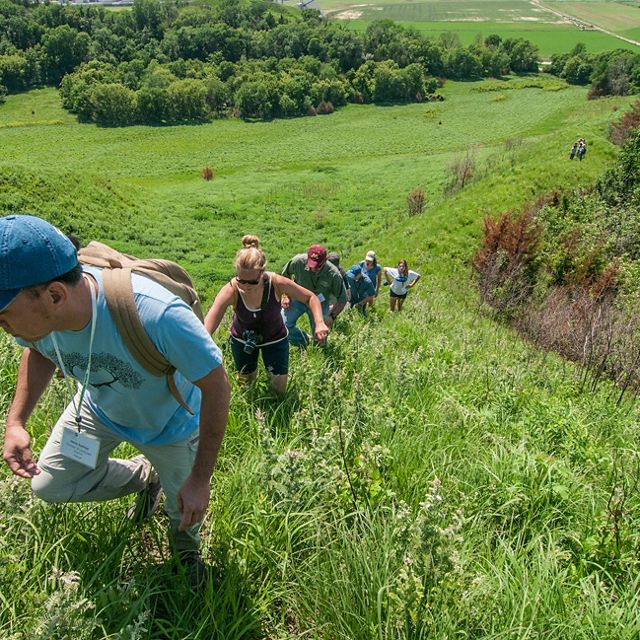Make a Difference in Iowa
Since 1963, The Nature Conservancy in Iowa has worked to preserve our state’s natural landscapes through the advancement of land and water conservation. Project managers across the state work within their own communities to protect and conserve private lands and work with agricultural producers and companies on best practices. The Nature Conservancy has worked to protect more than 20,000 acres of land in Iowa.
Press Release
Iowa Topeka Shiner Recovery Partnership Recognized for Conservation Success
TNC in Iowa and partners celebrated a milestone in improving the status of the Topeka shiner through oxbow habitat restoration, earning recognition from USFWS.

See the Places We Protect in Your Community
Our vision for Iowa is healthy lands and water, plus sustainable agriculture that supports biodiversity and provides for the needs of Iowa and the world.
The Nature Conservancy’s History in Iowa
1960-1969
Early Nature Conservancy members in Iowa encourage the organization to begin protecting natural areas in the Hawkeye State.


110 acres are purchased in the Little Sioux Valley—a unique geological formation and remnant prairie with wildlife. It is currently the most visited preserve in the state.

The Anna Beal Internship Trust Program begins. Scholarships are awarded to resident college undergraduates for a hands-on stewardship-focused summer internship on TNC properties throughout the state.

TNC begins protecting Iowa’s largest native prairie, Broken Kettle Grasslands, in the Loess Hills. Without this acquisition, the land would have been converted to cropland and subject to invasive species.

TNC completes the first conservation easement with a private landowner, demonstrating that landowners could protect the Loess Hills while still living and working on the land.

TNC identifies 47 acres of biological importance in the Mississippi River Basin; this leads to the selection of the Boone River Watershed and the Cedar River for conservation work.

In response to recent flooding, TNC converts flood-damaged farmland along the Missouri River into wetlands, which helps cleanse drinking water, expand outdoor recreation and improve habitat for flora and fauna.

834 acres are protected in the Loess Hills through the acquisition of the Hummel property. The property connects two state parks, creating 3,000 contiguous protected acres for the region's wildlife.
We Can’t Save Nature Without You
Sign up to receive monthly conservation news and updates from Iowa. Get a preview of Iowa’s Nature News email.

































